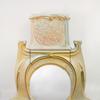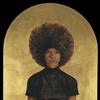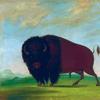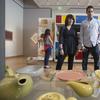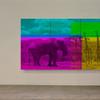Featured 19th Century Painter: Christopher Pearse Cranch (1813 – 1892)
- July 05, 2021 10:18

Christopher Pearse Cranch was born in Washington, D.C., the son of the Chief Justice of the United States Circuit Court of the District of Columbia. Cranch briefly studied art with his brother, noted portrait painter, John Cranch, before attending Columbian College (now George Washington University) in 1829, and later, Harvard Divinity School from which he graduated in 1835. An ordained minister, he led an itinerant early life, tending to congregations in Maine, Virginia, the District of Columbia, Missouri, Ohio, Kentucky and Massachusetts, Vermont. He became involved with the nascent Transcendentalist movement, which would have put him at odds with the Unitarian Church. He corresponded frequently with Ralph Waldo Emerson and in 1840, sent him two of his own versus, to which Mr. Emerson responded "the first is true and the second is brilliant". By December 1843, artist Christopher Cranch and his new bride, Elizabeth DeWindt, were residing in New York City. He had given up the pulpit for landscape painting with the full support of his wife, who preferred him to be anything but a minister. In the summer of 1846, the Cranch and his wife departed for Europe, traveling first through Italy where he met the American artists, Freeman, Thomas Hicks, Cropsey and Kensett. Cranch and Cropsey sketched the rocks and mountains in the Gulf of Salerno. In June 1849 they were in Paris, France, and in August they were back home in New York City. In 1853 the Cranches sailed for Europe again, this time Paris, France where they were to remain for 10 years. During that timeCranch made jaunts to Switzerland, Italy and the French countryside to make sketches and paint. Although considered an artist of the Hudson River School, he was an advocate of the Barbizon School of landscape painting. Prior to his studies abroad, 19th century Christopher Cranch sketched with Hudson River artists Jasper Cropsey and Asher B. Durand. Cranch’s landscapes were artistic manifestations that illustrate the connection between a continually changing nature and spirituality, paralleling the writings of Ralph Waldo Emerson and Henry David Thoreau. Between 1863 and 1873, Cranch lived in Fishkill, New York on the Hudson River, and kept a studio on Broadway in New York City. He exhibited regularly at the National Academy of Design and was made a full member in 1864. In later years, he turned to poetry, for which he is now better known. Cranch was a member of the American Art Union; Artists Fund Society; Boston Art Club, Brooklyn Art Association; and the National Academy of Design (elected). He exhibited at the American Art Union; American Watercolor Society, Painters in Watercolor; Boston Art Club; Art Institute of Chicago, the Boston Athenaeum, and Paris Salons.
Call now to talk about your interest in this Christopher Pearse Cranch (1813 – 1892) painting: 724-459-0612 - Jerry Hawk, Bedford Fine Art Gallery








